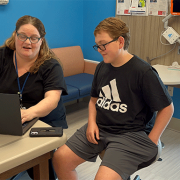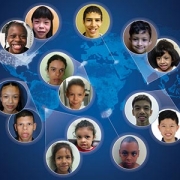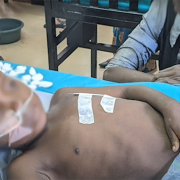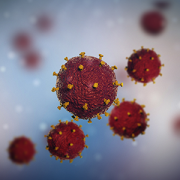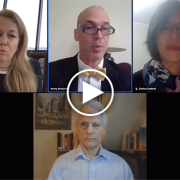M.D. in your pocket: New platform allows rare disease patients to carry medical advice everywhere
When someone has a rare disease, a trip to the emergency room can be a daunting experience: Patients and their caregivers must share the particulars of their illness or injury, with the added burden of downloading a non-specialist on the details of a rare diagnosis that may change treatment decisions.
Innovators at Children’s National Hospital and Vanderbilt University Medical Center, supported by Takeda, are trying to simplify that experience using a new web-based platform called the Rare Disease Clinical Activity Protocols, or Rare-CAP. This revolutionary collection of medical information allows patients to carry the latest research-based guidance about their rare disorders in their phones, providing a simple QR code that can open a trove of considerations for any medical provider to evaluate as they work through treatment options for someone with an underlying rare disease.
“No one should worry about what happens when they need medical help, especially patients with rare diseases,” said Debra Regier, M.D., division chief of Genetics and Metabolism at Children’s National and Rare-CAP’s lead medical advisor. “We built this new tool because I have watched as my patient-families have wound up in an emergency room — after all, kids get sprains or fractures — but they don’t have the expertise of a rare disease specialist with them. My hope is that they’re going to pull out their phones and access Rare-CAP, which will explain their rare disease to a new provider who can provide more thoughtful and meaningful care.”
The big picture
A rare disease is defined as any disorder that affects less than 200,000 people in the United States. Some 30 million Americans are believed to be living with one of the 7,000 known rare disorders tracked by the National Organization of Rare Diseases (NORD). Led by Dr. Regier, the Rare Disease Institute at Children’s National is one of 40 NORD centers for excellence in the country that provide care, guidance and leadership for the wide array of disorders that make up the rare disease community.
While a key goal of Rare-CAP is to bolster patient self-advocacy, the platform will also allow medical providers to proactively search for protocols on rare diseases when they know they need specialized advice from experts at Children’s National, a network of tertiary care centers and patient organizations.
As a leading values-based, R&D-driven biopharmaceutical company, Takeda has committed $3.85 million to the project to help activate meaningful change and empower a brighter future for rare disease communities, providing a unique understanding of the struggle that patients and caregivers face when they need care.
“Our team, alongside the medical and rare disease community, saw the need for a single portal to collect standardized care protocols, and we are thrilled to see this innovative tool come to life,” said Tom Koutsavlis, M.D., head of U.S. Medical Affairs at Takeda. “People with rare diseases and their caregivers need faster access to authoritative medical information that providers anywhere can act on, this will lead to improving the standard of care, accelerating time to diagnosis and breaking down barriers to increase equitable access.”
The patient benefit
The creators of Rare-CAP imagined its use in a wide range of settings, including emergency rooms, surgical suites, dental offices, urgent care offices and school clinics. The platform will eventually profile thousands of rare diseases and lay out the implications for care, while also creating a dynamic conversation among users who can offer updates based on real-world experience and changes in medical guidance.
“Our patients are unique, and so is this tool,” Dr. Regier said. “As we roll out Rare-CAP, we believe it is just the beginning of the conversation to expand the platform and see its power for the patient and provider grow, with each entry and each new rare disease that’s added to the conversation.”


